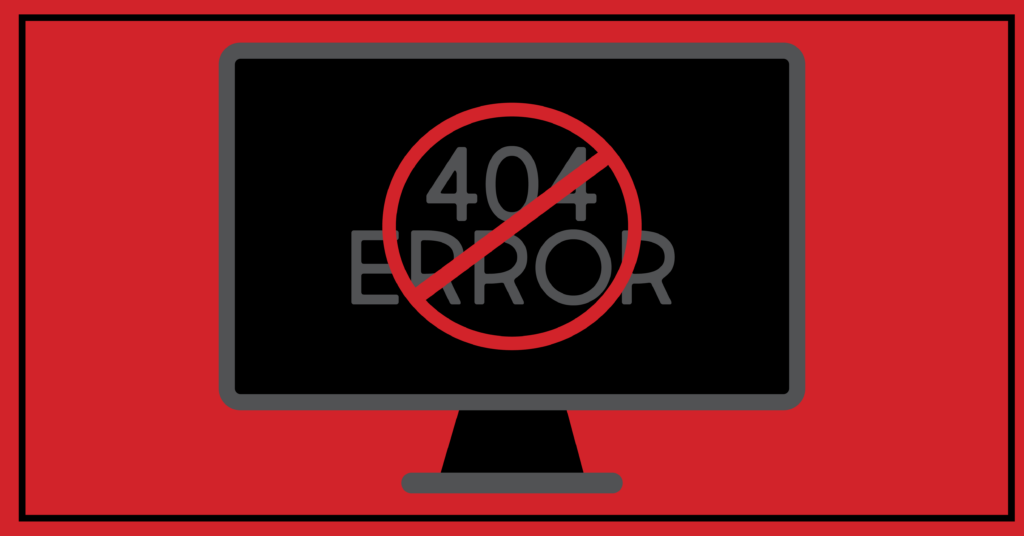Can Your Website Be Trusted? – Part 1

Updated July 13, 2020
One of the most influential factors in search engine rankings, as well as converting prospects into customers, is the perceived trust of the company as reflected in the online presence – primarily their website. If customers can’t trust your website, can they even trust your brand?
The following list includes some of the most important features your website can offer to prove credibility.

Trust Signal #1 – Reviews
Company reviews act as indicators to let search engines (and humans) reasonably know whether a website is safe, has good service, offers products of high quality and is dependable.
In fact, over 90% of buyers read online reviews before making a purchase – so making reviews easy to find, and managing the reviews are essential for business success.
A strong trust signal comes in the form of reviews on sites like:
– Google My Business / Places
– Tripadvisor
– Trustpilot
– Better Business Bureau
Reviews say a lot about a business and how well they are satisfying those who have visited and done business with them.
Important practices site owners should take regarding reviews:
1. Know where people are talking about them
2. Know what’s being said
3. Take action on the feedback
4. Respond to reviews whenever possible
5. Understand how to handle challenging reviews or how to have reviews removed
Displaying Reviews
When displayed on a company website, reviews can greatly improve visitor trust, which in turn will assist companies in converting visitors into paying customers by increasing conversion rates.
This process of displaying externally collected reviews on a website is frequently referred to as social proof.
It’s one thing to have a company publishing internal reviews on their site, but new visitors will often look at these and wonder about their authenticity. When the reviews come from a different site, that specializes in reviews, they become much more believable.
How to Handle Negative Reviews
No one (or business) is perfect, always be prepared for the one customer who visited your site and didn’t like a certain feature, or called on their bad day… Bad reviews are inevitable, but if you handle it respectfully, it shows you take others’ opinions into thought and consideration. Here’s a few actions on how to manage unfavorable reviews:
Action 1 – Inappropriate Reviews
Expressing displeasured emotions comes much easier when one is behind a computer screen. Sometimes reviews get out of hand and become excessive or incriminating. It is highly recommended to flag those reviews as inappropriate, because harsh tones or languages that should be associated with your brand or business.
For Google, this involves getting logged in to your Google My Business account, visiting Google Maps, searching and finding your location, pick Review Summary, under the summary is an Average Review score and a link below that says XXX number of reviews, click that, then find the specific review you want removed, click the 3 dots at the top right and finally click the flag icon / Flag as Inappropriate.
The 9 Reasons Google Removes Reviews:
1. Spam / Fake Content
2. More than one negative review from the same person
3. Made by ex-employees or current employees
4. Profanity, Racism or other inappropriate content
5. Inappropriate images as part of the review
6. Review not relevant to the customer experience
7. Review mistakenly placed – it’s intended for someone else
8. Competitor – Fake Reviews
9. Reviewer never visited the location (or hasn’t done business with you)
Action 2 – Positively Responding to the Review
As stated previously, no business is perfect. Customers will be honest about their experience with your business, and that’s okay! Just because someone doesn’t agree with your business methods, doesn’t mean you should get upset or automatically flag the comment.
When responding to these negative remarks, use caution and do not respond out of anger. It is easy to get defensive, but keep in mind your voice and tone (whether directly or indirectly) represents your company. Also, responding to reviews has an influence on search rankings!
Creditable Review Placement
Dedicated Review & Testimonial Page
Having a dedicated page that showcases reviews and testimonials is a great way to start. There are a lot of people who need to see several pages of a site before taking any real action, so having this in the navigation is a good way to give them some positive feedback as they dig.
Homepage
The website homepage is an obvious placement. It’s high traffic, highly crawled by search engines and is one page customers have to see before forming a complete opinion about a site.
Product / Service Pages
Product or service pages can be a good place to include reviews, particularly if you can get them close to whatever call to action button or link you might have on the page.
Sidebar
Sidebar placement is good, since it can go broadly across the site without breaking the flow of primary content sections. However, having different reviews focused on the page to which they relate is ideal.
Trust Signal #2 – Active Site with Interactions & Engagements
Active Site
When finding a site in search results that’s totally new to someone, they’ll quickly make a determination as to whether the site is thriving or failing.
A few of the things that lead to an opinion of inactivity include:
Copyright Notice
If the footer has a copyright notice and the date is from years gone by, that’s a sure sign that the site isn’t actively being maintained, which is a huge worry to someone about to part with their hard-earned cash.
Choosing a theme that automatically updates the copyright notice to the current year would be a nice thing, though it can be done with a bit of code, or by manually editing the footer as well.
Most Recent Post Date
When looking at a blog, checking out the most recent posts is a regular occurrence. If the most recent post date is from the distant past, it signals inactivity in a big way.
For WordPress sites, this means making sure that your theme is set to show the post date / updated date on the post.
Starting each post with a date line is good practice, for example: Published: June 27, 2021 or Updated: January 3, 2020.
Post Frequency
Companies that regularly publish are seen as active, while those who only add new blog content infrequently are thought of as inactive.
Making your post frequency come across clearly means having several excerpts showing on the main blog page, newest first.
It also means not having too many diverse categories with just one or two posts each, since visitors may land on a post or category page and will draw conclusions based on what they first see.
This approach is much like stores who keep their shelves full – it’s strictly a perception issue.
News and Events
If the company has news about happenings, new products or services, big wins, awards or trade shows being attended, that’s great. Those who don’t share such are suspect.
Interaction and Engagement
Having an active site is great, but without user engagement, it can appear the brand is broadcast only and not interested in their audience opinions, feedback, or questions.
There are two critical components of engagement that can show activity and engagement at the same time.
Post Comments
It’s certainly much easier to manage a site if comments are closed on all posts.
However, that inability for the audience to share opinions and interact with the company and other commenters neuters one of the key features of WordPress and hampers visitor opinion of the brand.
Set comments to require admin approval. Take control of what goes up on the site and still give visitors a chance to share their opinions while conveying the image of a site that is interactive and engaging.
Social Feed
Echoing a small, but recent, feed of social media activity is a great way to show people you do interact with your audience while giving social proof. It’s one way of tapping into the 78% of people who are influenced by what the company says on social media.
Trust Signal #3 – Citations Linking to Familiar Authorities
You are who you quote…. at least that’s what website visitors think.
If your site takes a non-mainstream view of things and quotes some dubious sources as proof, there will be little doubt in the minds of the masses that you’re way out there on the fringe (for most companies – a very bad thing).
Relying on Trusted Sources:
– Link to Highly Credible Sites
– Quote their Statistics
– Refer to their Case Studies
– Use their Opinions as Validation
All these show that you rely on highly trusted sources of information in what you do, which in turn means that visitors will trust what you have to say that much more.
Outbound Links
Outbound links impact site trust, whether it’s measured as Trust Flow, TrustRank, MozTrust or other metric of a similar nature.
Citation Notation / Footnotes
When posting deep-dive (lengthy) content, having a bottom section, like footnotes, with a compendium of what you’ve referred to or linked to throughout the post is a great way to show that you’re relying on high-trust, high-authority sources and that you give credit where credit is due.
Dofollow vs Nofollow
Marking up external links with rel=”external” is essential. However, dofollow vs nofollow is another matter entirely.
Outbound links can be dofollow. Setting rel=”nofollow” is designed for cases where you don’t really trust the source, or it is low authority/trust – which then begs the question, “Why are you linking to it at all?”.
Implementing citations in content, like posts or pages, can be done using a citation or footnote plugin from wordpress.org. Try them out and see which works best for your needs.
Regardless of the plugin choice used, it’s critically important that high trust, relevant sites are linked out to when creating content intended to inspire visitor trust and improve search rankings.

Trust Signal #4 – Client Logos
Showcasing clients by displaying their logos is another great way to instill trust so that new visitors associate the site brand with client logos displayed – like an endorsement.
The logic behind this is simply that if the site visited is good enough for those companies whose logos are displayed, then they could be good enough for the visitor.
Logos and Name-dropping are NOT the Same as Testimonials
Keep in mind that showing client logos, or even a page with a list of clients (if it’s fairly impressive) is not the same as showing a logo or image of a person along with a brief testimonial that they’ve provided.
A handful of testimonials from well-known companies is pure gold! That being said, it’s still good to have a section, carousel or list of some clients, with logos – since logos are instantly recognizable.
Is it Legal to Show Other Company Logos?
In most parts of the world, you should get written permission to do so, since logos are protected intellectual property, both copyright and trademark.
Exceptions are creating editorial content or product comparisons, but the safest course of action is to always get written permission before using the logo of another company on your site.
Trust Signal #5 – Credit Card Symbols for Payment Processing
Referred to as trust badges, these graphics show visitors that the checkout process will be using standard, world recognized payment methods, such as VISA, MasterCard, PayPal and Apple Pay.
Adding trust badges can increase conversion rates by 30%, 40% or more!
Trust badges that are credit card symbols are expected to be found near the site footer and on customer checkout pages. Sites that aren’t selling via e-commerce can often still benefit from having these in the footer, since paying for services or products will occur at some point, and they convey trust in the company.
Implementing Payment Method Trust Badges
Editing the footer of the child theme you’re using is the typical approach, since your choice of payment types and payment gateways can vary considerably and the graphics need to match the actual payment methods accepted.

Trust Signal #6 – An Error Free Site
WordPress site errors can come in many shapes and sizes and includes things like:
Spelling and Grammar
Checking spelling and grammar can be as simple as installing a browser extension, like Grammarly, or using a plugin which integrates with WordPress, such as Jetpack, whose spelling, grammar and style checker can be enabled in the WordPress editor by changing one setting:
Broken Links or 404 Errors
Broken links are frustrating for users and bad for search engines, so making sure a site is free of them should be a priority.
Technically broken links are mostly a user experience issue, not a ranking signal, but if it negatively impacts users, it impacts their opinion of the site, and that means a loss of trust and a risk to rankings.
There are several methods of finding broken links, but two of the most popular are Crawler and Google Search Console.
404 errors occur when you have deleted a page on your site, but not necessarily the links that connect to it. (Read more here to see how 404 errors could be hurting your site)
Click HERE to continue on to part 2 of ‘Can My Website Be Trusted’.